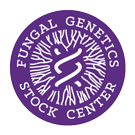Strain: Neurospora crassa
FGSC #719
Reporting Genes: his-3
Species: crassa
Allele: K446
Mutagen: UV
Depositor: DGC
Linkage Group: IR
Mating Type: a
Genetic Background: E
ref1: Catcheside 1960 Proc Roy Soc London 153:179-194, https://doi.org/10.1098/rspb.1960.0095
Genes
